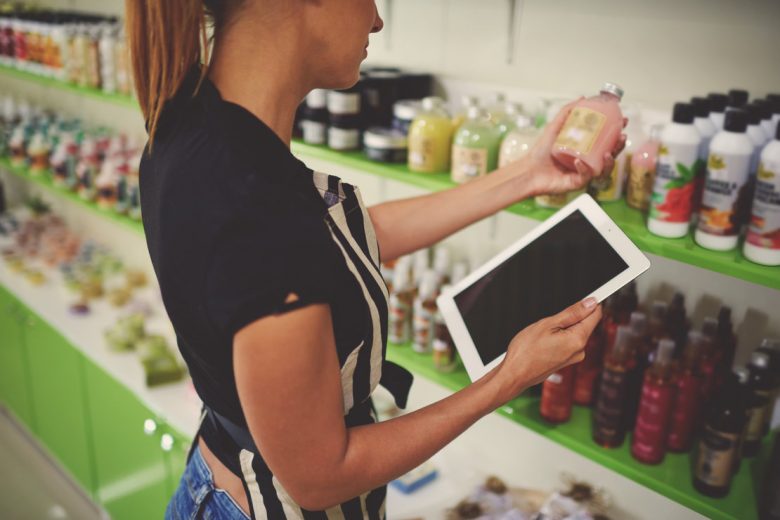There is no doubt that technology has the power to give SMEs a competitive advantage against some of the largest corporations, but only if they know how to leverage it properly. In a study that compared company size with IT spending, ROI consultancy Alinean Inc. discovered that SMEs often outspend larger ones. Small businesses spend, on average, around 6.9% of revenue, midsized companies spend 4.1%, while larger companies only spend a miserly 3.2% of revenue. Conversely, however, the study also showed that the companies that invest the most in IT aren’t always the best performers. In fact, some of the highest performing SMEs were actually among the most frugal when it came to IT spending. The most successful companies, it turns out, weren’t the ones that spent the most, but the ones that were the most conservative in their approach.
Here are 5 ways SMEs can use technology effectively to stay competitive and create an amazing customer experience.
1. Get Organized
What many businesses fail to understand is that the customer experience is often predetermined long before the customer or consumer ever walks in the door. The customer experience is actually the end result not the starting point. For instance, it doesn’t matter how helpful or friendly a sales person is if they are unprepared, ill-informed or overwhelmed. If a customer has an encounter with an employee that is clearly doing their best and giving their all but lacks training, knowledge or support, it’s not the employee the customer is likely to blame their poor experience on.
Technology can help educate, train and equip employees, foster better communication and create smoother, more streamlined processes. Technology can even analyze customer traffic to help even the smallest of businesses better schedule their human resources to appropriately meet demand. The smoother your business runs, the better prepared your employees will be to provide a great customer experience.
2. Provide Better Interaction
One caveat to organizational efficiency is that it does not always improve the customer experience. In some cases, it may actually diminish it. One reason that this happens is that businesses often fail to understand the true value of human interaction. For instance, Apple makes iPads, which should be a great tool for their sales people. What they found, however, is that tablets actually create a barrier between the customer and the sales person. A sales associate can get so wrapped up in checking their tablet that they aren’t actually engaging with the customer. Today, Apple uses iPads for customer check-ins, but their sales associates are only equipped with headsets that allow them to communicate with other employees and scanner devices they wear on their hip that allow them to take payments. Organizational efficiency is only effective so long as it fosters human interaction rather than interfering with it.
3. Use Customized Marketing
In early 2018, headlines were dominated by the Cambridge Analytica scandal. According to reports, the data analysis firm unethically obtained personal data from Facebook profiles, which they then allegedly used to create fake news stories in an attempt to sway voters. While the use of this data is both shocking and disturbing, it does provide a tantalizing peek into the future of marketing. While estimates vary from report to report, an estimated 30 billion connected devices will be in use by 2020.
All of these devices will generate an absolute tsunami of data about individual usage, all of which can be collected and compiled into actionable intelligence by AI and machine learning. Armed with this data, event smallest of businesses will be able to better tailor their services to the individual needs of their customer.
4. Personalize Customer Experience
While we may not be in an age yet where SMEs can completely customize advertising to the specific user, we are already in an age where technology can create a more personal experience. Automation already allows SMEs to send out birthday greetings to customers or target specific marketing materials to a certain segment of your clientele. Savvy businesses, however, can take this personalization even further. SMEs often have an advantage when it comes to personalization, because they are sometimes still small enough to actually know their clients by name or know more personal details about them.
Real estate agents can use automation to send a bottle of champagne to clients on the one-year anniversary of closing on a home or insurance agents to remind clients personally when it might be time to review coverage. Automation allows you to send out personalized and individual communications without having to remember dates and details every year. Carnival Cruise Lines calls this a “segment of one.”
5. Give The Customer More Control
Many service-oriented SMEs already use online scheduling systems to allow clients to set their own appointments any time they choose. Self-service systems allow customers to conduct a number of other basic tasks such as updating their personal information, changing features on plans, policies or services and ordering new or replacement products. The fine line that businesses always need to walk, however, is between customers that want more control and customers that want better service. Even today in the travel industry, while many consumers prefer to book their own travel arrangements online, many still want to call a travel agent and have them do all the scheduling for them.
Achieving or maintaining this balance might be the foundational key to why some of the most successful businesses actually spend less on technology. They are not looking for complete systems that eliminate the need for human employees, but rather look for systems that will enhance the personal interaction between employee and customer.
Wrapping Up
One of the most common fears among technophobes is that technology will one day replace humans. What even the most high-tech businesses are discovering, however, is that the ease of technology will simply never be an adequate substitute for human interaction and engagement. In fact, in a world that is more connected than ever before, people are actually lonelier than ever. In fact, research suggests that loneliness may actually be the next biggest public health issue, on par with obesity and substance abuse. This is something for businesses to take notice of, and SMEs in particular.
There is no doubt that technology can give a significant competitive advantage to SMEs, but only if they don’t make the same mistakes as giant corporations. Technology that doesn’t help create a more personal relationship between SMEs and their clients is more likely to hinder their business than help it.














Pingback: The E-Commerce Market is Booming. Here is How to Catch the Wave » AtSo
Pingback: Top 3 Reasons Your Online Business Needs A Sales Funnel - StartUp Mindset
Pingback: The Heart of Marketing: How to Connect and Engage with Customers - StartUp Mindset
Pingback: 7 Reasons Your Startup Should be Using VOIP As It’s Phone System - StartUp Mindset